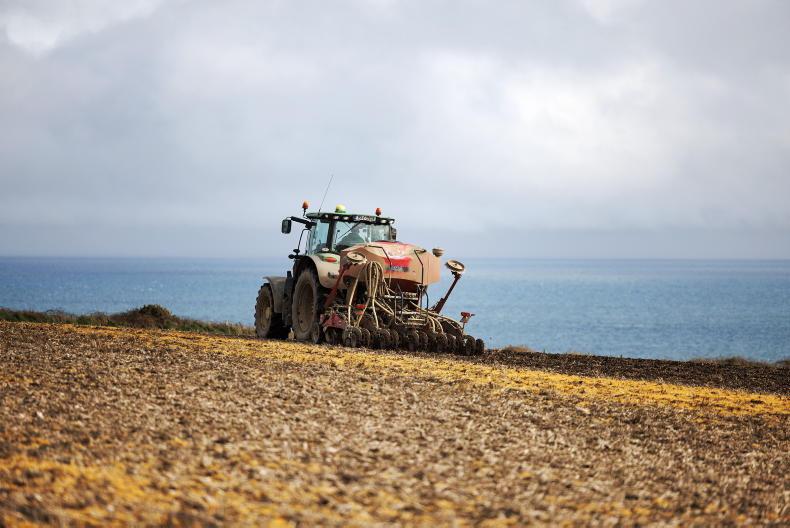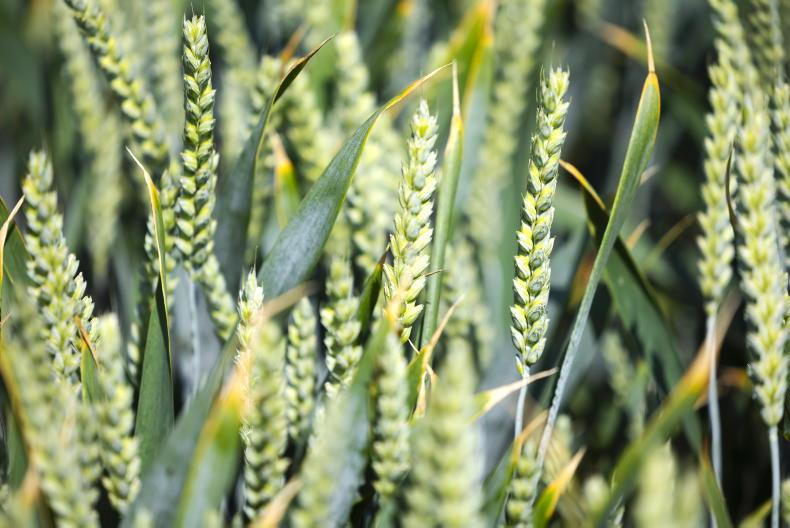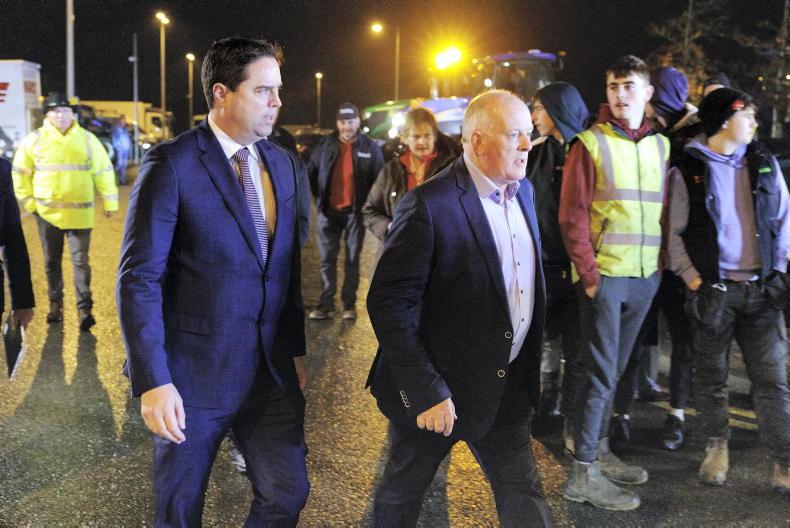It is gone past the time for Government, farm organisations and agricultural and food bodies to stand up and take action to grow the tillage sector in this country.
The tillage area is about to drop, at a time when it is needed more than ever. Remember, it has a low carbon footprint.
Crucially, at a time when carbon emissions need to be cut, tillage has huge potential to offset emissions through straw chopping, improved soil management and cover cropping, while feeding livestock at the same time.
It makes sense then to have a target in the Climate Action Plan to increase tillage area to 400,000ha by 2030, from about 348,000ha in 2022. However, a target is not always met. Actions are needed. Policy and regulation at present are driving tillage area in the opposite direction to the target. The minister wants to increase tillage but:
New nitrates regulations are driving land rental prices and pushing tillage land into grassland. The new TAMS is facilitating farmers to start a farming business in all sectors apart from tillage. The minister formed a committee to make proposals to increase tillage area. They asked for grain trailers and concrete in TAMS. They haven’t been included. An increase in tillage area will come from people exiting livestock, in small chunks of land and the basics are ?needed. These farmers do not need a grain store. They need temporary storage to allow choice in where grain is delivered. They need sprayers with a price tag well below six figures and they need a trailer to deliver grain or beet to the neighbouring farm. . New nitrates and CAP requirements are making it more difficult to farm. They are taking significant areas of land out of production with new buffer zones, putting pressure on farmers at extremely busy times of the year and the science supporting these decisions is lacking.Representation
At the core of the problem is the lack of representation of tillage on State boards and authorities. Tillage farmers are not represented on the Teagasc authority, Bord Bia or the Food Vision committee. No Food Vision tillage group was established. Last week saw Louise Byrne chosen to sit on the Teagasc authority. She works in crop policy and plant health at the Department. It’s a move towards some representation, but no farmers have a voice.
Where is the tillage lobby in all of this? Meetings with farmers are needed to ensure proposals on policy are informed. There is strength in numbers and the unity of a farmers meeting where decisions are made cannot be underestimated.
What can be done?
Co-operation between tillage and livestock is needed to free up land – encourage this with a forage crop scheme and dates which suit grazing of these crops in ACRES. Encourage slurry exports.
Reward farmers for using Irish grain. Some feed mills are making huge efforts to use native. However, Bord Bia does not reward farmers using Irish feed. It does not differentiate between grain from different farming systems. There is room for grass-fed and Irish-fed beef and milk, but more work is also needed in defining the carbon footprint of Irish grains.
A tillage representative in Bord Bia could help to put a focus on Irish grain usage in Irish drinks production.
Tillage is being forced out of existence by poorly thought-out legislation and regulations and this will continue if all that happens is the Minister for Agriculture says he wants to increase the tillage area. Writing it in the Climate Action Plan does not make it happen. After all, there are more than enough tillage plans sitting on the shelves in Kildare Street gathering dust.
The livestock sector, Department and State bodies cannot continue to ignore the elephants in the room. A plan of action is needed.
Have your say
It is gone past the time for Government, farm organisations and agricultural and food bodies to stand up and take action to grow the tillage sector in this country.
The tillage area is about to drop, at a time when it is needed more than ever. Remember, it has a low carbon footprint.
Crucially, at a time when carbon emissions need to be cut, tillage has huge potential to offset emissions through straw chopping, improved soil management and cover cropping, while feeding livestock at the same time.
It makes sense then to have a target in the Climate Action Plan to increase tillage area to 400,000ha by 2030, from about 348,000ha in 2022. However, a target is not always met. Actions are needed. Policy and regulation at present are driving tillage area in the opposite direction to the target. The minister wants to increase tillage but:
New nitrates regulations are driving land rental prices and pushing tillage land into grassland. The new TAMS is facilitating farmers to start a farming business in all sectors apart from tillage. The minister formed a committee to make proposals to increase tillage area. They asked for grain trailers and concrete in TAMS. They haven’t been included. An increase in tillage area will come from people exiting livestock, in small chunks of land and the basics are ?needed. These farmers do not need a grain store. They need temporary storage to allow choice in where grain is delivered. They need sprayers with a price tag well below six figures and they need a trailer to deliver grain or beet to the neighbouring farm. . New nitrates and CAP requirements are making it more difficult to farm. They are taking significant areas of land out of production with new buffer zones, putting pressure on farmers at extremely busy times of the year and the science supporting these decisions is lacking.Representation
At the core of the problem is the lack of representation of tillage on State boards and authorities. Tillage farmers are not represented on the Teagasc authority, Bord Bia or the Food Vision committee. No Food Vision tillage group was established. Last week saw Louise Byrne chosen to sit on the Teagasc authority. She works in crop policy and plant health at the Department. It’s a move towards some representation, but no farmers have a voice.
Where is the tillage lobby in all of this? Meetings with farmers are needed to ensure proposals on policy are informed. There is strength in numbers and the unity of a farmers meeting where decisions are made cannot be underestimated.
What can be done?
Co-operation between tillage and livestock is needed to free up land – encourage this with a forage crop scheme and dates which suit grazing of these crops in ACRES. Encourage slurry exports.
Reward farmers for using Irish grain. Some feed mills are making huge efforts to use native. However, Bord Bia does not reward farmers using Irish feed. It does not differentiate between grain from different farming systems. There is room for grass-fed and Irish-fed beef and milk, but more work is also needed in defining the carbon footprint of Irish grains.
A tillage representative in Bord Bia could help to put a focus on Irish grain usage in Irish drinks production.
Tillage is being forced out of existence by poorly thought-out legislation and regulations and this will continue if all that happens is the Minister for Agriculture says he wants to increase the tillage area. Writing it in the Climate Action Plan does not make it happen. After all, there are more than enough tillage plans sitting on the shelves in Kildare Street gathering dust.
The livestock sector, Department and State bodies cannot continue to ignore the elephants in the room. A plan of action is needed.
Have your say









SHARING OPTIONS